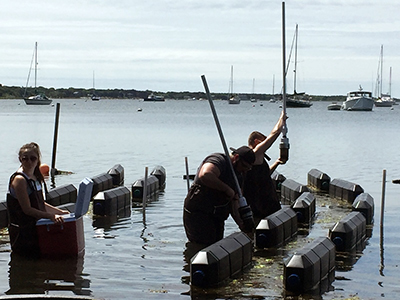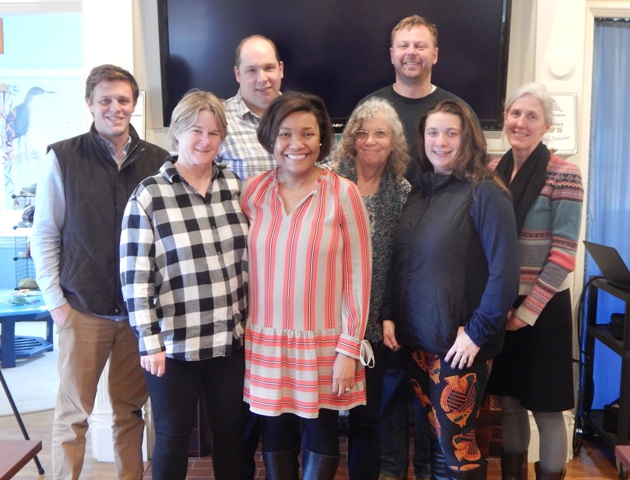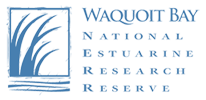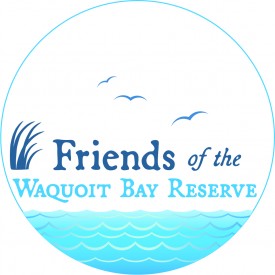Evaluating Oyster Aquaculture Strategies

Evaluating effectiveness of different oyster aquaculture strategies for nitrogen loading remediation to inform end user decisions to restore water quality.
Increasing population density in coastal areas without adequate infrastructure to manage wastewater needs has led to an increase in the amount of nitrogen(N) delivered to coastal waters. Excess nitrogen loading has degraded coastal ecosystem health and caused significant economic impacts. On Cape Cod towns are under regulatory, environmental and legal pressure to implement strategies to restore water quality.
FACT SHEET: Evaluating Whether Oyster Aquaculture – Can Help Restore Water Quality
VIDEO: Oysters & Towns: Logistics, Education & People
Towns are exploring the use of less costly non-traditional management options such as shellfish aquaculture as part of their water quality management plans. While interest in the approach is strong, managers identify that a consensus does not yet exist on which aquaculture methods provide the most efficient and cost-effective removal of nitrogen. Using a strong collaborative approach with potential end users this project will evaluate three of the most popular oyster aquaculture systems – floating bags, rack mount systems and bottom cages – for their efficiency at exporting nitrogen to the sediments and stimulating the sediment-hosted biological community to remove nitrogen. Results generated and insights gained will be used to inform water quality plans and develop training and a best practices guide for towns, growers, state and regional agencies. Information will also be integrated in education programs for shellfish managers, decision-makers and community members.
Keep It from Going Stinky: Oysters, Gear and Nitrogen Webinar
Evaluating Effectiveness of Different Oyster Aquaculture Strategies for Nitrogen Loading Remediation to Inform Water Quality Management Efforts
March 23, 2021
Description: Increasing population density in coastal areas without adequate infrastructure to manage wastewater needs has led to an increase in the amount of nitrogen delivered to coastal waters. Excess nitrogen leads to negative ecological and economic impacts on communities and coastal areas such as algal blooms, fish kills, shellfish, and beach closures. Towns on Cape Cod are under pressure to improve coastal water quality, but many approaches are very costly, such as developing centralized sewer treatment infrastructure for homes that currently have septic systems. A growing number of towns are exploring the use of less costly non-traditional management options such as shellfish aquaculture as part of their water quality management plans. While interest in using shellfish aquaculture for this purpose is increasing, managers identify that a consensus does not yet exist on which aquaculture methods provide the most efficient and cost-effective removal of nitrogen.
In this webinar we will share findings from a research study which used a collaborative approach with end users to evaluate three of the most popular oyster aquaculture systems being used by growers today – floating bags, mid-water systems and bottom cages. The project investigated and compared the efficiency of each system at exporting nitrogen to the sediments and stimulating the sediment-hosted biological community to remove nitrogen. Both the science and aquaculture farming results will be shared with an eye toward providing helpful recommendations to growers and local officials and identifying best practices that can inform shellfish aquaculture efforts that include nitrogen remediation as a goal.
PowerPoint Presentations: Evaluating Sediment Denitrification Under Three Oyster Aquaculture Systems in Waquoit Bay
Research Article: Comparison of Oyster Aquaculture Methods and Their Potential to Enhance Microbial Nitrogen Removal From Coastal Ecosystems
Webinar Recording: Keep It From Going Stinky: Oysters, Gear and Nitrogen Webinar
Participant Questions & Answers from the Speakers
Speakers:
- Daniel Rogers, Associate Professor, Analytical Chemistry, Stonehill College
- Chuck Martinsen, Deputy Director, Department of Marine and Environmental Services, Town of Falmouth
- Virginia Edgcomb, Microbial Ecologist, Woods Hole Oceanographic Institution
- Dr. Paraskevi (Vivian) Mara, Research Associate, Woods Hole Oceanographic Institution
- Tonna-Marie Rogers, Director, Waquoit Bay National Estuarine Research Reserve

The research was conducted in collaboration with the Woods Hole Oceanographic Institution, Stonehill College, Town of Falmouth, Waquoit Bay National Estuarine Research Reserve and Science Wares Inc. We worked closely with end users of the science over the course of the project to ensure that the outputs are as useful as possible to managers. End user groups included towns, shellfish officers, water quality managers, MA DEP, DMF, Cape Cod Commission, among others.
Project Team: Dr. Virginia Edgcomb, Tonna-Marie Rogers, Joan Muller, Christina Lovely (front row); Christopher Schillaci, Dr. Daniel Rogers, Roy Martinson, Heather McElroy (back row), Anastasia Karplus (not pictured)



